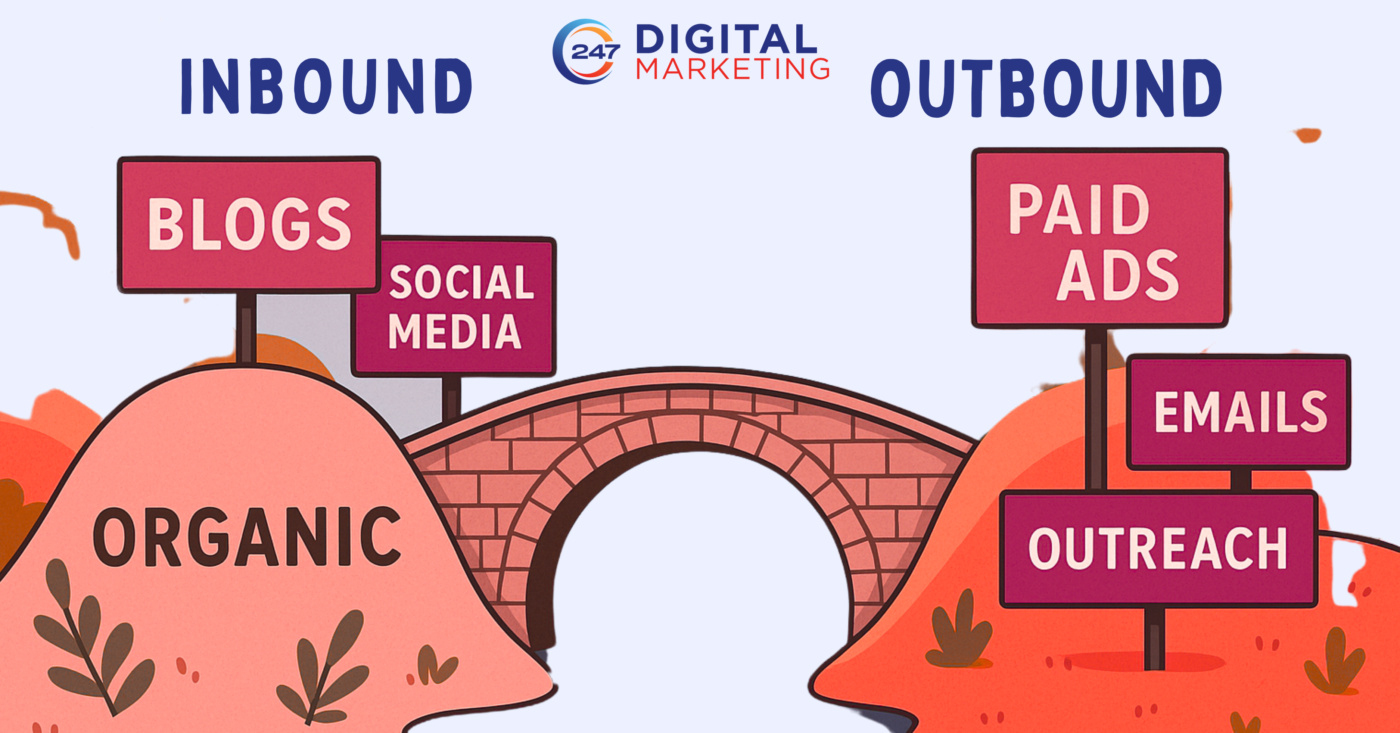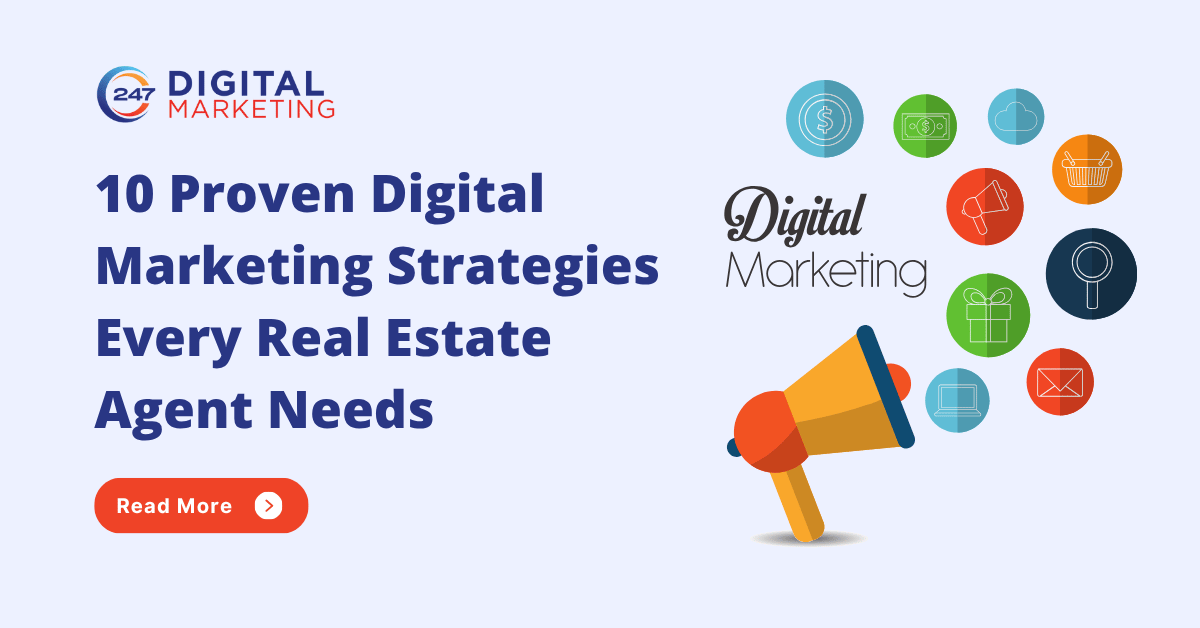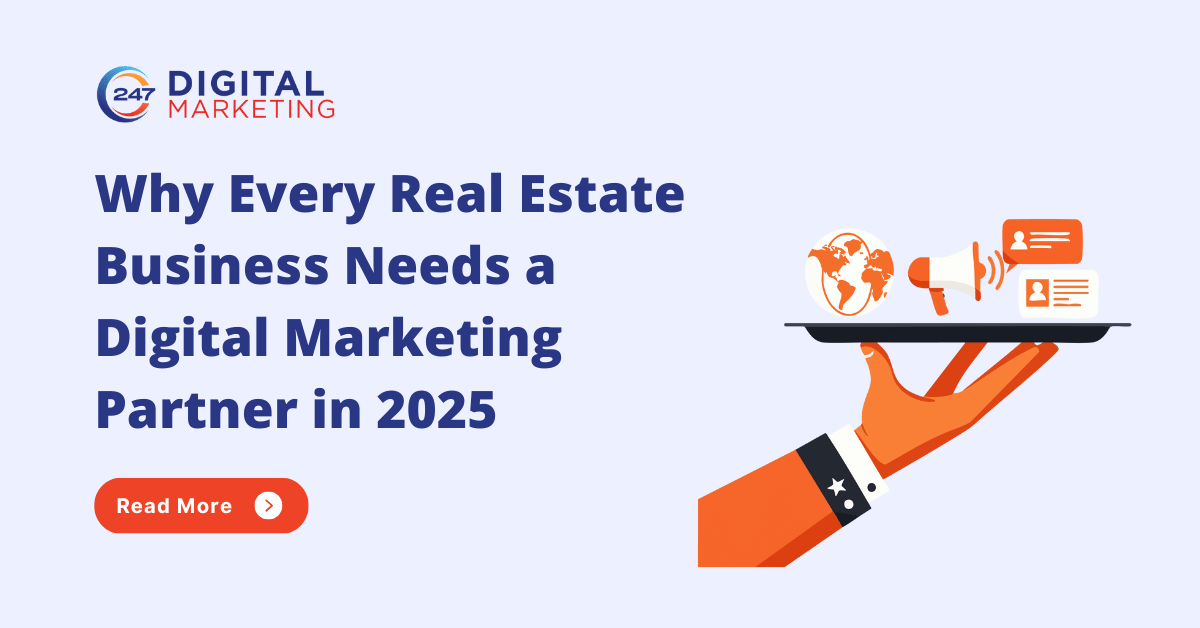Combining Inbound and Outbound Marketing: How To Create a Balanced Strategy

Combining Inbound and Outbound Marketing: How To Create a Balanced Strategy
When it comes to lead generation and digital marketing strategies, many debate whether inbound or outbound marketing is better.
On the one hand, inbound marketing draws customers in and builds trust and engagement, which can lead to sustainable, long-term relationships. On the other, outbound marketing takes a proactive approach to spark interest and brand awareness in audiences already likely to need a product or service.
However, instead of comparing and pitting the two, there’s a third way of looking at your marketing strategy: combining them into one cohesive plan. With the right balance, you can attract, engage and convert your ideal customers to drive business growth.
What Is Inbound Marketing?
Inbound marketing focuses on attracting customers by addressing their needs through valuable content rather than direct promotion. It ensures your brand is visible to those actively seeking solutions.
- SEO: Improve search rankings to attract organic traffic. (For example, an SEO company in New York might optimize local keywords to dominate search results.)
- Content Marketing: Educate audiences with blogs, videos, and guides. (Check out our guide on Private School Marketing Strategies for niche-specific tactics.)
- Social Media Engagement: Build communities and foster loyalty through regular interaction.
What Is Outbound Marketing?
Outbound marketing involves proactively reaching out to potential customers, even if they aren’t searching for your brand. It’s ideal for quick visibility and targeting high-potential audiences.
Core tactics include:
- PPC Ads: Bid for ad placements on search engines or social platforms.
- Cold Outreach: Initiate contact via emails, calls, or direct mail.
- Retargeting: Re-engage website visitors with tailored ads.
5 Benefits of Combining Inbound and Outbound Marketing
- Expand Brand Reach
Inbound attracts engaged searchers; outbound captures passive audiences. - Accelerate Customer Journeys
Outbound generates early interest; inbound nurtures leads to conversion. - Strengthen Trust
Inbound establishes authority; outbound reinforces brand recall. - Diversify Lead Sources
Balance organic traffic with targeted outreach for consistent pipelines. - Optimize Budget Efficiency
Pair inbound long-term value with outbound immediate impact.
5 Tips for Blending Inbound + Outbound Strategies
- Boost Top-Performing Content with Ads
Promote high-traffic blogs or videos through paid campaigns to new audiences. - Retarget Organic Visitors
Use ads to re-engage users who browsed your site but didn’t convert. - Align Email + Social Campaigns
Share email content on social media and vice versa to cross-pollinate audiences. - Personalize Cold Outreach
Reference case studies or blog posts in follow-ups to add value. - Leverage Webinars with Paid Promotion
Drive registrations via ads, then nurture attendees with post-event emails.
Pitfalls to Avoid
- Inconsistent Brand Voice: Ensure messaging aligns across all channels.
- Ignoring Analytics: Track metrics like engagement and conversions to refine tactics.
- Over-Saturation: Avoid bombarding audiences with too many ads or emails.
- Impersonal Outreach: Tailor cold emails to the recipient’s industry or pain points.
Why Choose One When You Can Have Both?
Inbound and outbound marketing aren’t rivals—they’re partners. A hybrid strategy maximizes visibility, nurtures leads at every stage, and delivers measurable ROI.”Combining inbound and outbound marketing creates a seamless experience for customers, from discovery to decision. The result? Faster growth and lasting loyalty.
247 Digital Marketing designs custom strategies that blend organic engagement with precision targeting. Contact us today to turn leads into lifelong customers.
Mitesh Patel is the co-founder of 247 Digital Marketing, LawFirm Marketing and a columnist. He helps companies like Emerson and other top Fortune 500 compnies to grow their revenue.




